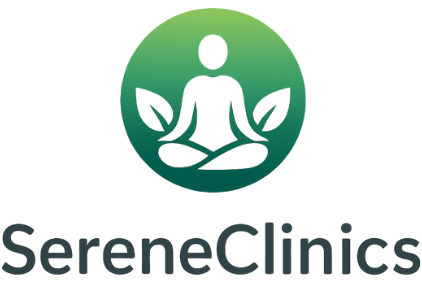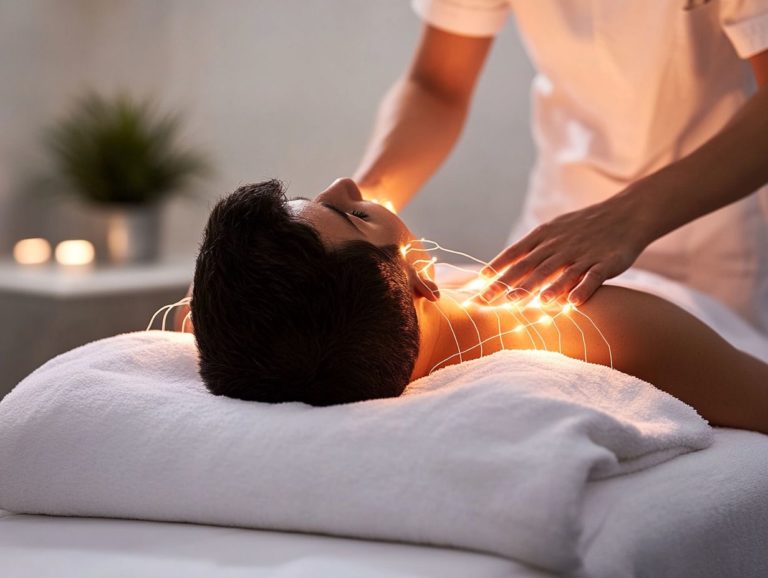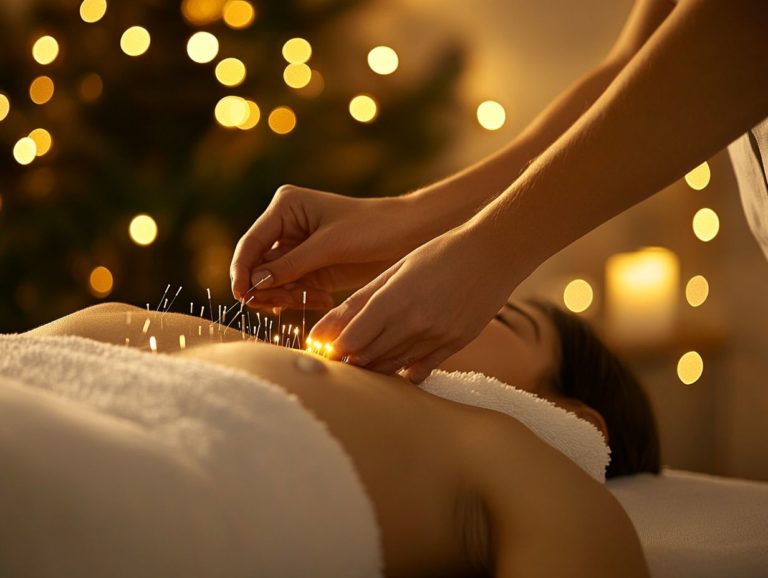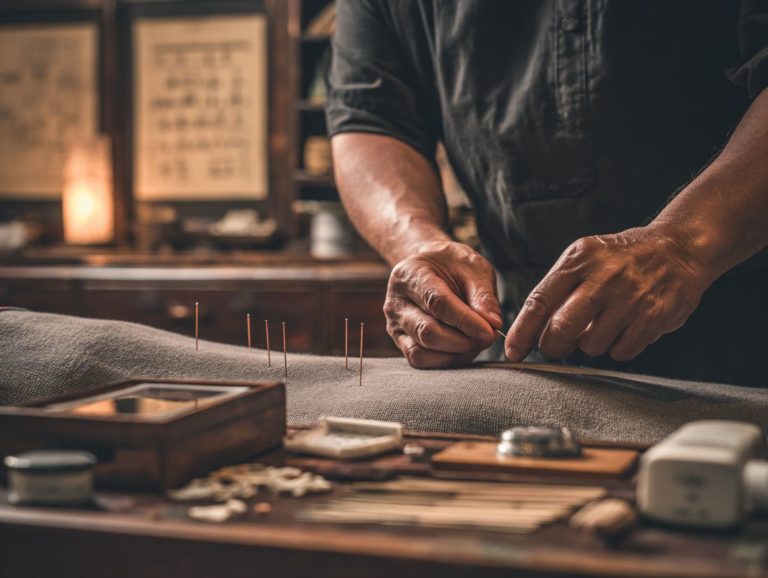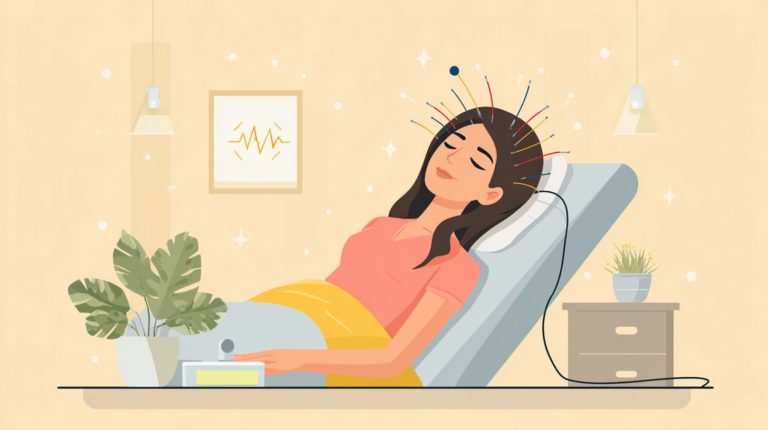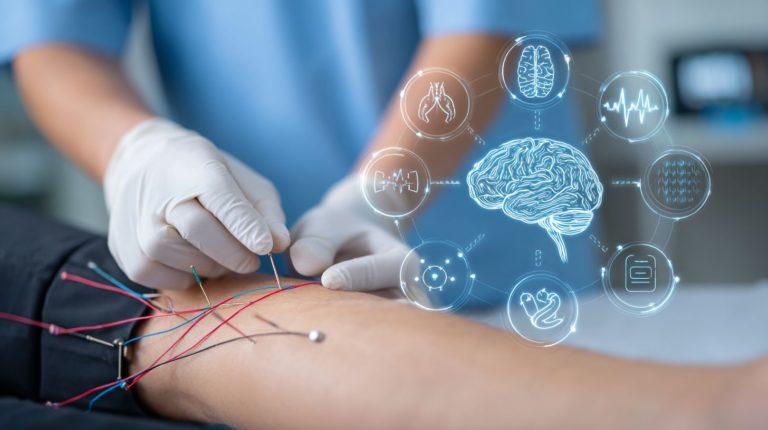How to Choose Between Manual and Electrical Acupuncture
Deciding whether to use manual acupuncture or electroacupuncture is important for individuals looking to relieve chronic pain effectively. Traditional acupuncture uses thin needles for treatment, whereas electroacupuncture adds electrical stimulation to this method. Learning about these treatment methods helps you choose the best option for your needs. Look into how each method can give you the relief you need.
Key Takeaways:
Contents
- 1 Understanding Electroacupuncture
- 2 Benefits of Electroacupuncture for Chronic Pain
- 3 Common Treatment Protocols for Electroacupuncture
- 4 Acupuncture Method Comparison Statistics for Mild Cognitive Impairment
- 5 Challenges in Electroacupuncture Treatment
- 6 Electroacupuncture’s Role in Combined Medical Approaches
- 7 Frequently Asked Questions
- 7.1 What is the difference between manual and electrical acupuncture?
- 7.2 How do I know which method is best for me?
- 7.3 Is one method more effective than the other?
- 7.4 Are there any risks involved with using electrical acupuncture?
- 7.5 Which method is more commonly used by practitioners?
- 7.6 Can I use both methods of acupuncture together?
Understanding Electroacupuncture
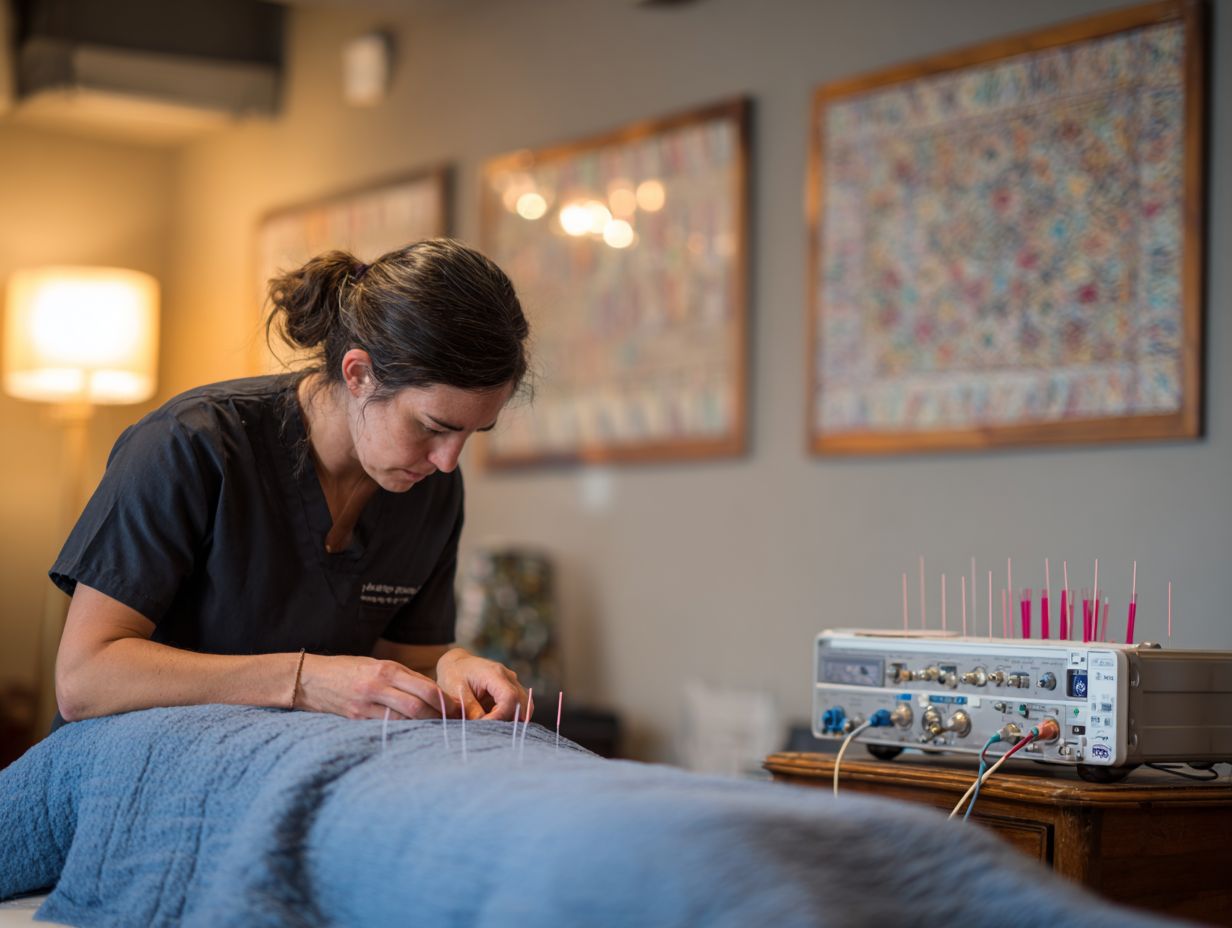
Electroacupuncture uses traditional acupuncture methods along with electrical stimulation to improve pain relief and treatment results for different health issues. According to a recent publication on ScienceDirect, these techniques have a sound mechanistic basis that enhances their therapeutic effectiveness.
What to Expect During an Electroacupuncture Session
During an electroacupuncture session, patients will experience a customized process where needles are placed at certain points and linked to a device that provides mild electrical stimulation.
At the start, a practitioner will examine the patient to find the most suitable acupuncture points, often concentrating on spots like the back, knees, or wrists, based on the patient’s health issue.
The needles are typically inserted to a depth of 1-2 inches. Afterward, gentle electrical stimulation is applied, usually within a voltage range of 1-10 mA, enhancing the therapeutic effect.
Sessions typically last between 30 to 60 minutes, and safety measures such as using sterile needles and monitoring patient comfort are paramount throughout the process.
Benefits of Electroacupuncture for Chronic Pain
Electroacupuncture is known for its substantial help in managing long-term pain, often cutting pain levels by up to 50% for many patients after only a few treatments. For more information on its effectiveness, guidelines, and safety, consider our detailed insights on electroacupuncture.
Evidence-Based Research Supporting Electroacupuncture
Research has shown that electroacupuncture is effective for treating Bell’s palsy and muscle wasting.
For instance, a study in the Journal of Acupuncture and Meridian Studies involved 150 participants with Bell’s palsy, where 95% experienced notable improvement in facial muscle function after 12 sessions.
Another 200-patient trial published in Pain Medicine demonstrated a 40% reduction in muscle atrophy symptoms in patients receiving electroacupuncture versus a control group.
Moreover, ClinicalTrials.gov has documented the efficacy of electroacupuncture in patients with various health issues, underscoring its rising acceptance among healthcare professionals seeking alternative treatment methods.
Common Treatment Protocols for Electroacupuncture
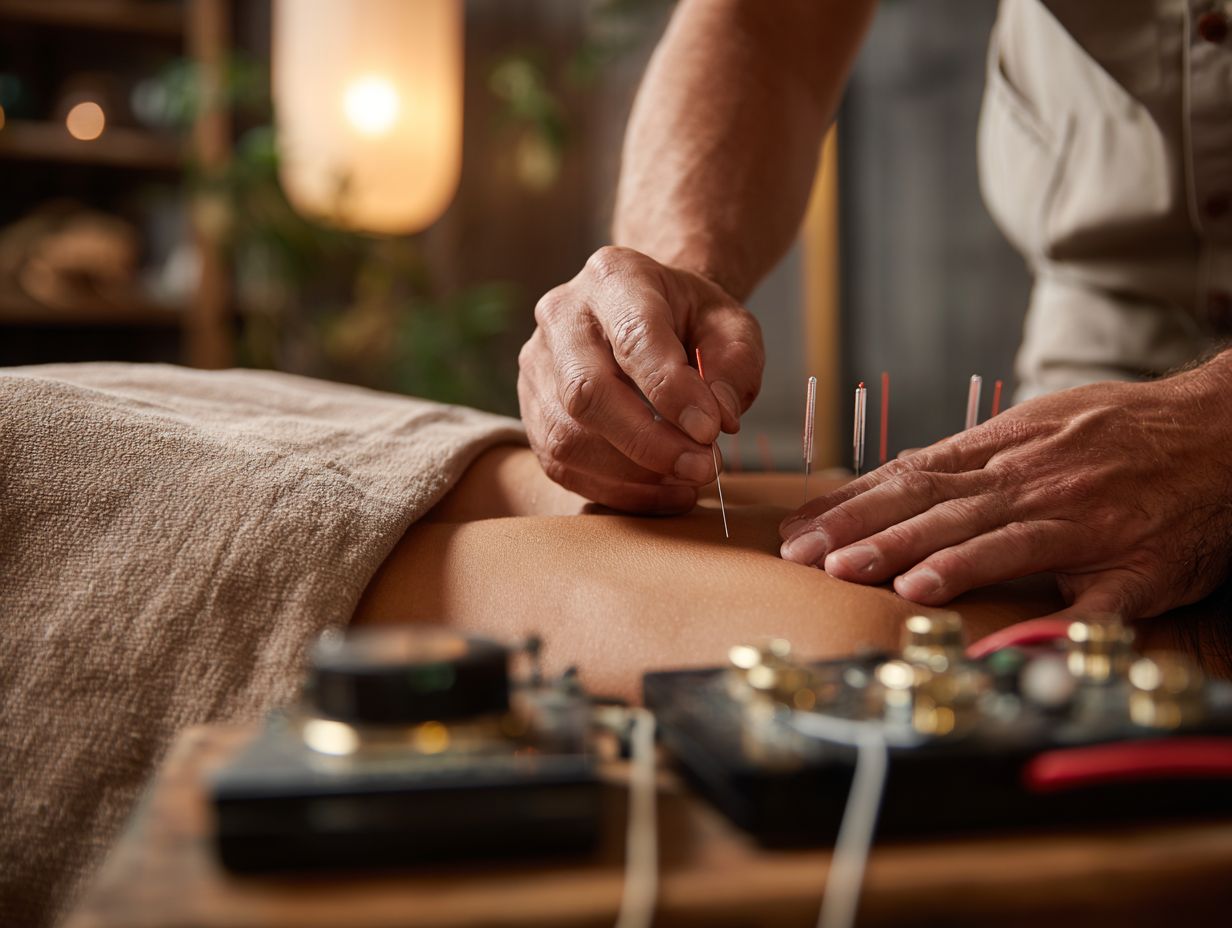
Electroacupuncture treatment plans are customized, concentrating on each patient’s needs and particular conditions to get the best possible health results. For a deeper understanding of the nuances involved, an exploration of Electroacupuncture: Effectiveness, Guidelines, and Safety could be insightful.
Comparison of Electroacupuncture and Traditional Acupuncture
Electroacupuncture and traditional acupuncture both work to improve the movement of Qi and maintain balance in the body, but they use different techniques and may have different results.
To understand the differences more clearly, consider the following comparison:
- Electroacupuncture uses electrical pulses on specific acupuncture points, often giving quick pain relief and a stronger sensation.
- Traditional acupuncture uses needles inserted and moved by hand, aiming to treat the whole body for different problems.
- Patients often report that electroacupuncture features a more intense experience, potentially leading to discomfort, while traditional methods typically evoke relaxation.
- Research shows that electroacupuncture is more effective for pain relief in certain cases, supported by clinical studies.
- In contrast, traditional acupuncture has a rich historical background, validated by centuries of use for generalized treatment. For those interested in a comprehensive overview, this article on News Medical covers the extensive history and evolution of this practice.
Acupuncture Method Comparison Statistics for Mild Cognitive Impairment
Acupuncture Method Comparison Statistics for Mild Cognitive Impairment
Acupuncture Techniques and Efficacy: MMSE Score Improvement
Acupuncture Techniques and Efficacy: MoCA Score Improvement
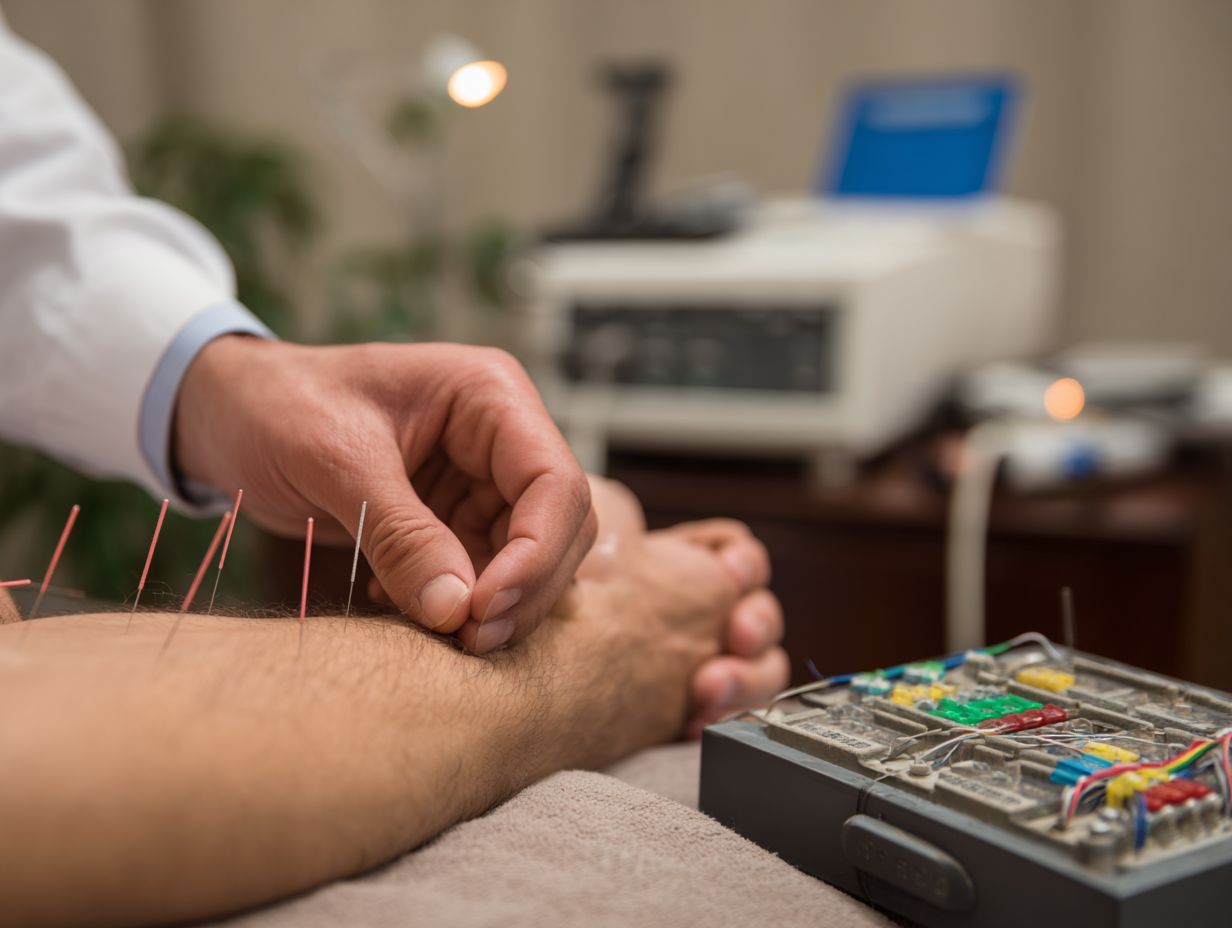
The Acupuncture Method Comparison Statistics for Mild Cognitive Impairment offers information on how well different acupuncture methods work to raise cognitive test scores, specifically the MMSE (Mini-Mental State Examination) and MoCA (Montreal Cognitive Assessment) scores. This data highlights the benefits of combining acupuncture techniques with traditional treatments to improve thinking abilities.
Acupuncture Techniques and Efficacy demonstrates varied impacts on cognitive improvements:
- MMSE Score Improvement: Electroacupuncture leads with a 38% improvement Indicates improved ability to encourage brain activity. Moxibustion with Conventional Therapy follows, showing a 28% improvement showing how well it works when used together with traditional methods. Manual Acupuncture with Conventional Therapy achieves a 22% improvement, greater than Manual Acupuncture alone at 14%, highlighting the importance of complementary approaches.
- MoCA Score Improvement: Manual Acupuncture with Moxibustion dominates with a 91.4% improvement, reflecting significant cognitive benefits. Moxibustion with Conventional Therapy also shows efficacy with a 52% improvement. Combining with traditional therapy improves Manual Acupuncture to a 28% improvement, whereas Acupressure with Conventional Therapy accounts for a modest 9% improvement, suggesting varied effectiveness among techniques.
The data shows the benefits of using acupuncture along with regular treatment to increase cognitive improvements for mild cognitive impairment. Electroacupuncture and Manual Acupuncture with Moxibustion show substantial potential, emphasizing the importance of technique selection and integration for maximizing therapeutic outcomes.
Challenges in Electroacupuncture Treatment
Although it has advantages, electroacupuncture brings some difficulties that practitioners must handle to keep patients comfortable and the treatments effective.
Maintaining Safety in Electroacupuncture Practices
Safety is key in electroacupuncture. Practitioners must use particular methods to keep patients safe and make sure the treatment is effective.
To keep things safe, professionals need to stick to a list of key rules.
- Check acupuncture tools often to confirm they work properly.
- Using single-use needles is important to stop infections.
- Educating patients about potential side effects like muscle soreness can set realistic expectations and prepare them for post-treatment sensations.
For instance, documenting incidents where safety measures were overlooked highlights the critical nature of these protocols; adherence significantly reduces the risk of complications, ensuring a safer environment for both practitioners and patients.
Electroacupuncture’s Role in Combined Medical Approaches
Electroacupuncture is becoming more common in treatment plans and gaining acceptance in integrative medicine. This technique is part of a broader range of methods used in acupuncture to enhance well-being and alleviate pain. Learn more about various acupuncture techniques and their benefits to better understand how they contribute to stress relief and overall health.
Frequently Asked Questions
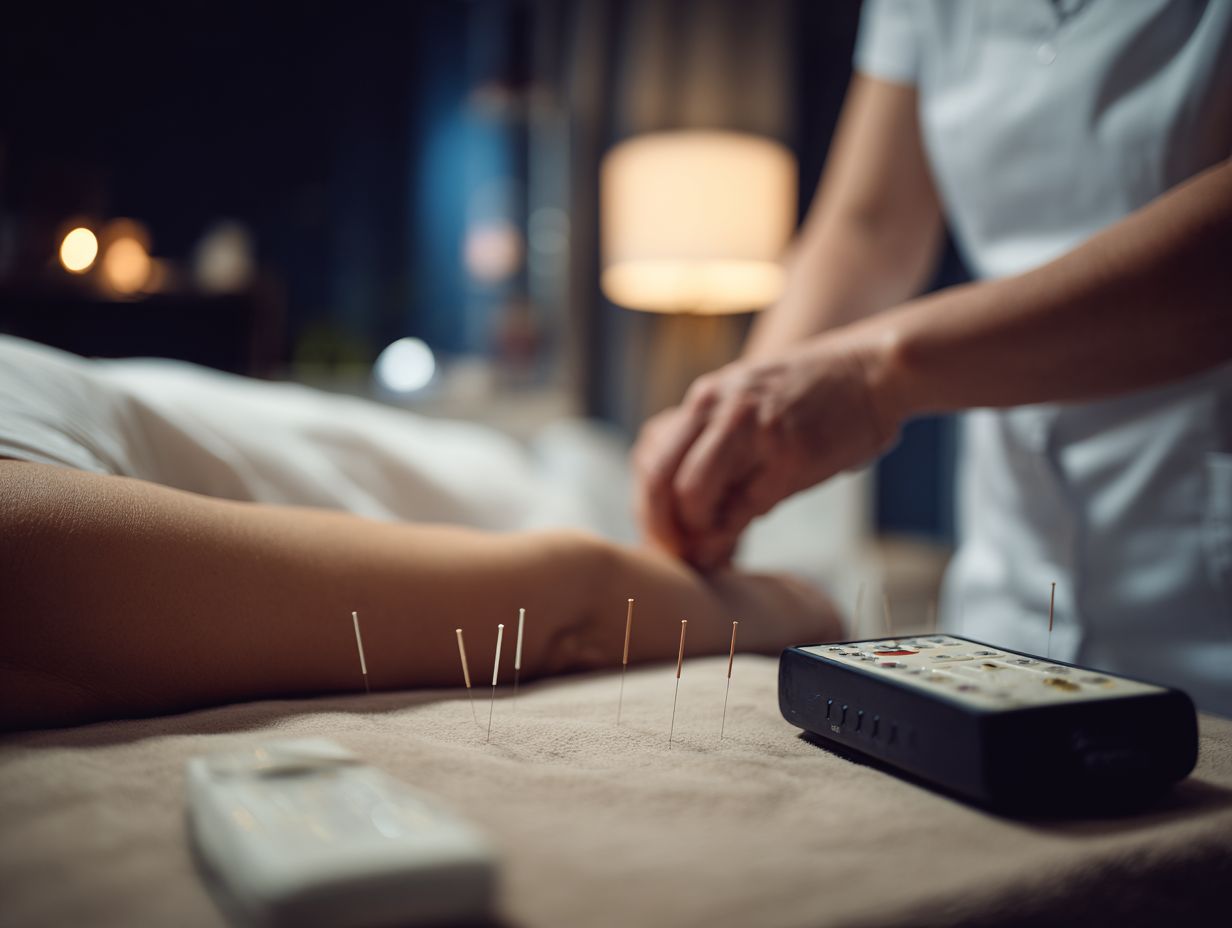
What is the difference between manual and electrical acupuncture?
Manual acupuncture involves the use of thin needles that are inserted into specific points on the body to stimulate energy flow. Electrical acupuncture, on the other hand, uses a small electric current to aid in the stimulation of these acupuncture points.
How do I know which method is best for me?
The best method of acupuncture will depend on your specific needs and preferences. If you are uncomfortable with needles, then electrical acupuncture may be a better option for you. But, if you like a classic method, manual acupuncture could be your choice.
Is one method more effective than the other?
Both manual and electrical acupuncture have been shown to be effective in treating various conditions. Some studies show that electrical acupuncture might reduce pain faster than manual acupuncture.
Are there any risks involved with using electrical acupuncture?
As with any medical procedure, there are some risks involved with electrical acupuncture. These may include skin irritation or burning at the site of the treatment, but these are usually minor and can be avoided with proper technique and supervision from a trained professional.
Which method is more commonly used by practitioners?
Manual acupuncture is the more traditional and commonly used method by practitioners. However, with improvements in technology, many practitioners now include electrical acupuncture in their treatment plans to make the treatment more effective.
Can I use both methods of acupuncture together?
Yes, it is possible to combine both manual and electrical acupuncture in a single treatment session. This is known as electroacupuncture and is believed to have a stronger effect when used together, especially for chronic pain conditions. You should talk to an expert before using these methods together.

Sheetal Sharda has a background in CS. She got an interest in Holistic living back in 2018, and has since started exploring more into Naturapathy, Holistic Living, Yoga, and more. She got inspired to start SereneClinics to help people find reliable centers across the world.
